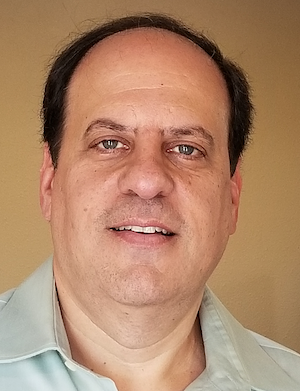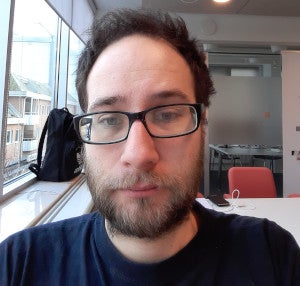 The Free Software Foundation (FSF) started promoting the idea of sharing code way back in 1985, and since then it's defended the rights of computer users and developers. The FSF says that the terms "open" and "closed" are not effective words when classifying software, and instead considers programs either freedom-respecting ("free" or "libre") or freedom-trampling ("non-free" or "proprietary"). Whatever terminology you use, the imperative is that computers must belong, part and parcel, to the users, and not to the corporations that owns the software the computers run. This is why the GNU Project, and the Linux kernel, Freedesktop.org, and so many other open source projects are so important.
The Free Software Foundation (FSF) started promoting the idea of sharing code way back in 1985, and since then it's defended the rights of computer users and developers. The FSF says that the terms "open" and "closed" are not effective words when classifying software, and instead considers programs either freedom-respecting ("free" or "libre") or freedom-trampling ("non-free" or "proprietary"). Whatever terminology you use, the imperative is that computers must belong, part and parcel, to the users, and not to the corporations that owns the software the computers run. This is why the GNU Project, and the Linux kernel, Freedesktop.org, and so many other open source projects are so important.
Feature Articles
CMS Releases Proposed Updates to Medicare MIPS Promoting Interoperability Program for Physicians
 On July 29, 2022 the Centers for Medicare and Medicaid Services (CMS) released a notice of proposed rulemaking (NPRM) related to changes in the Medicare Program Physician Fee Schedule for 2013. Among the proposals in this lengthy document are those related to the Promoting Interoperability Program for physician practices, the successor to the Meaningful Use of Electronic Health Record (EHR) technology that was originally rooted in the 2009 HITECH Act. This program has been evolving over the years and this NPRM proposes some meaningful changes to the public health reporting component which would first be used for calendar year 2023.
On July 29, 2022 the Centers for Medicare and Medicaid Services (CMS) released a notice of proposed rulemaking (NPRM) related to changes in the Medicare Program Physician Fee Schedule for 2013. Among the proposals in this lengthy document are those related to the Promoting Interoperability Program for physician practices, the successor to the Meaningful Use of Electronic Health Record (EHR) technology that was originally rooted in the 2009 HITECH Act. This program has been evolving over the years and this NPRM proposes some meaningful changes to the public health reporting component which would first be used for calendar year 2023.
How We Track The Community Health Of Our Open Source Project
 To be an effective leader in an open source community, you need a lot of information. How do I know who the most active members in my community are? Which companies are making the most contributions? Which contributors are drifting away and becoming inactive? Who in the community is knowledgeable about a specific topic? These were just a few of the questions I had when I started leading the Mautic community at Acquia. But the problem was not a shortage of information. On the contrary, there were so many places our community interacted and so many things to track that I was drowning in data. I could access plenty of data sources, but they were not helping me manage the community effectively or answering my questions.
To be an effective leader in an open source community, you need a lot of information. How do I know who the most active members in my community are? Which companies are making the most contributions? Which contributors are drifting away and becoming inactive? Who in the community is knowledgeable about a specific topic? These were just a few of the questions I had when I started leading the Mautic community at Acquia. But the problem was not a shortage of information. On the contrary, there were so many places our community interacted and so many things to track that I was drowning in data. I could access plenty of data sources, but they were not helping me manage the community effectively or answering my questions.
How To Make App Stores Friendly To Open Source
 Microsoft recently seemed to propose that Open Source software didn’t belong in the Windows app store. Excuse me? After the news broke, Giorgio Sardo, Microsoft’s General Manager of the Microsoft Store, argued on Twitter that it wasn’t Microsoft’s intent. “We absolutely want to support developers distributing successful OSS apps. In fact, there are already fantastic OSS apps in the Store! The goal of this policy is to protect customers from misleading listings.” Predictably, confusion results. And the kerfuffle over FairEmail and the Google Play Store earlier this year is a good example of how this sort of confusion is not entirely new, leading to questions about intent. I’ve talked with developers and business managers about their experience in preparing software packages for commercial app stores. Universally, everyone reports having issues with app stores’ packaging. These include...
Microsoft recently seemed to propose that Open Source software didn’t belong in the Windows app store. Excuse me? After the news broke, Giorgio Sardo, Microsoft’s General Manager of the Microsoft Store, argued on Twitter that it wasn’t Microsoft’s intent. “We absolutely want to support developers distributing successful OSS apps. In fact, there are already fantastic OSS apps in the Store! The goal of this policy is to protect customers from misleading listings.” Predictably, confusion results. And the kerfuffle over FairEmail and the Google Play Store earlier this year is a good example of how this sort of confusion is not entirely new, leading to questions about intent. I’ve talked with developers and business managers about their experience in preparing software packages for commercial app stores. Universally, everyone reports having issues with app stores’ packaging. These include...
Public Health Information Systems Are Not Just About Technology
 Public health information systems have always been a key component of the healthcare ecosystem. Links between clinical care and public health have only been increasing, propelled by the pandemic. As defined by the Public Health Informatics Institute (PHII) in its 2021 Immunization Information System (IIS) Core Competency Model, information systems management is the “application and administration of technologies to securely and effectively meet IIS program and user needs”. The pandemic highlighted the need for public health information systems to collect, track, and monitor vaccine administration for ages newborn through adulthood, and mandated data to be reported or accessible to a broad range of recipients at the local, state and federal level.
Public health information systems have always been a key component of the healthcare ecosystem. Links between clinical care and public health have only been increasing, propelled by the pandemic. As defined by the Public Health Informatics Institute (PHII) in its 2021 Immunization Information System (IIS) Core Competency Model, information systems management is the “application and administration of technologies to securely and effectively meet IIS program and user needs”. The pandemic highlighted the need for public health information systems to collect, track, and monitor vaccine administration for ages newborn through adulthood, and mandated data to be reported or accessible to a broad range of recipients at the local, state and federal level.
The Changing Face of Public Health System Procurement
 The development and acquisition of public health systems is poised to change. Historically, public health agencies had the classic choice when it came to acquiring a new data system. Either they developed the system themselves – usually based on a belief that their requirements were “unique” – or they licensed a COTS/GOTS product from the limited choices available in a small market. Typically, agencies that chose to develop solutions were forced to use a waterfall approach as government procurement is not well suited to the flexibility of Agile systems development. Some agencies have been able to leverage open source offerings. While most do not have the wherewithal to support open source products themselves, many have formed strong partnerships with other organizations, both for-profit and nonprofit, to take advantage of these systems.
The development and acquisition of public health systems is poised to change. Historically, public health agencies had the classic choice when it came to acquiring a new data system. Either they developed the system themselves – usually based on a belief that their requirements were “unique” – or they licensed a COTS/GOTS product from the limited choices available in a small market. Typically, agencies that chose to develop solutions were forced to use a waterfall approach as government procurement is not well suited to the flexibility of Agile systems development. Some agencies have been able to leverage open source offerings. While most do not have the wherewithal to support open source products themselves, many have formed strong partnerships with other organizations, both for-profit and nonprofit, to take advantage of these systems.
A Guide To Productivity Management In Open Source Projects
 Open source is one of the most important technology trends of our time. It’s the lifeblood of the digital economy and the preeminent way that software-based innovation happens today. In fact, it’s estimated that over 90% of software released today contains open source libraries. There's no doubt the open source model is effective and impactful. But is there still room for improvement? When comparing the broader software industry’s processes to that of open source communities, one big gap stands out: productivity management. By and large, open source project leads and maintainers have been slow to adopt modern productivity and project management practices and tools commonly embraced by startups and enterprises to drive the efficiency and predictability of software development processes. It’s time we examine how the application of these approaches and capabilities can improve the management of open source projects for the better.
Open source is one of the most important technology trends of our time. It’s the lifeblood of the digital economy and the preeminent way that software-based innovation happens today. In fact, it’s estimated that over 90% of software released today contains open source libraries. There's no doubt the open source model is effective and impactful. But is there still room for improvement? When comparing the broader software industry’s processes to that of open source communities, one big gap stands out: productivity management. By and large, open source project leads and maintainers have been slow to adopt modern productivity and project management practices and tools commonly embraced by startups and enterprises to drive the efficiency and predictability of software development processes. It’s time we examine how the application of these approaches and capabilities can improve the management of open source projects for the better.
Interview With Free Software Foundation Executive Director Zoë Kooyman
On the Critical Role of Site Reliability Engineering
 Understanding the basics and best practices for establishing and maintaining a Site Reliability Engineering (SRE) program in an organization...SREs are responsible for maximizing reliability, performance availability, latency, efficiency, monitoring, emergency response, change management, release planning, and capacity planning for both infrastructure and software. As applications and infrastructure grow more complex, SRE teams help ensure that these systems can evolve.
Understanding the basics and best practices for establishing and maintaining a Site Reliability Engineering (SRE) program in an organization...SREs are responsible for maximizing reliability, performance availability, latency, efficiency, monitoring, emergency response, change management, release planning, and capacity planning for both infrastructure and software. As applications and infrastructure grow more complex, SRE teams help ensure that these systems can evolve.
Top 8 open source project management tools for agile teams
 Opensource.com has surveyed the landscape of popular open source project management tools. We've done this before—but this time we've added a twist. This time, we're looking specifically at tools that support agile methodology, including related practices such as Scrum, Lean, and Kanban. The growth of interest in and use of agile is why we've decided to focus on these types of tools this year. A majority of organizations say they are using agile approaches at least sometimes. In addition, agile projects are 28% more successful than projects managed with traditional approaches. For this roundup, we looked at the project management tools we covered in 2014, 2015, and 2016 and plucked the ones that support agile, then did research to uncover any additions or changes. Whether your organization is already using agile or is one of the many planning to adopt agile approaches, one of these seven open source project management tools, in no particular order, may be exactly what you're looking for.
Opensource.com has surveyed the landscape of popular open source project management tools. We've done this before—but this time we've added a twist. This time, we're looking specifically at tools that support agile methodology, including related practices such as Scrum, Lean, and Kanban. The growth of interest in and use of agile is why we've decided to focus on these types of tools this year. A majority of organizations say they are using agile approaches at least sometimes. In addition, agile projects are 28% more successful than projects managed with traditional approaches. For this roundup, we looked at the project management tools we covered in 2014, 2015, and 2016 and plucked the ones that support agile, then did research to uncover any additions or changes. Whether your organization is already using agile or is one of the many planning to adopt agile approaches, one of these seven open source project management tools, in no particular order, may be exactly what you're looking for.
Attract Contributors To Your Open Source Project With Authenticity
 It's not a secret that maintaining an open source project is often thankless and time-consuming work. However, I've learned that there's one shared joy among open source maintainers: They love building with a group of technologists who passionately believe in their vision...Check out these methods that open source maintainers can use to attract contributors in a genuine manner.
It's not a secret that maintaining an open source project is often thankless and time-consuming work. However, I've learned that there's one shared joy among open source maintainers: They love building with a group of technologists who passionately believe in their vision...Check out these methods that open source maintainers can use to attract contributors in a genuine manner.
Today's Patient Portals CAN NOT Capture Network Value (Part 2)
 Today’s patient portals are a mess. The catchphrase “Your mom has 7 portals for 7 providers” sums up patients’ frustrations and the resulting tepid utilization of portals. Today’s portals CAN NOT capture network value. The first post in this series introduced the platform terminology of single-homing vs. multihoming. Patients strongly would prefer to have as few portals as possible — ideally one, i.e., a single “home”. However, patients are forced to subscribe to multiple homes since today’s portals are tethered to individual institutions or care providers. In this post, we’ll introduce the platform terminology of stand-alone vs. network value. Today’s patient portals can provide some stand-alone value, but they provide minimal network value.
Today’s patient portals are a mess. The catchphrase “Your mom has 7 portals for 7 providers” sums up patients’ frustrations and the resulting tepid utilization of portals. Today’s portals CAN NOT capture network value. The first post in this series introduced the platform terminology of single-homing vs. multihoming. Patients strongly would prefer to have as few portals as possible — ideally one, i.e., a single “home”. However, patients are forced to subscribe to multiple homes since today’s portals are tethered to individual institutions or care providers. In this post, we’ll introduce the platform terminology of stand-alone vs. network value. Today’s patient portals can provide some stand-alone value, but they provide minimal network value.
Bipartisan Commission on Biodefense Issues Call For a National Public Health Data System
 In April 2022 the Bipartisan Commission on Biodefense released a new report titled The Athena Agenda: Advancing the Apollo Program for Biodefense. Established in 2014, the privately-funded commission convenes periodically and conducts research to assess the state of US biodefense efforts and to make recommendations for change and improvement. Spurred by the events surrounding the COVID-19 pandemic, this report challenges the country to prepare itself for future pandemics by establishing aggressive goals, gathering our “best and brightest” talent, developing action-oriented plans, and funding their accomplishment as the “next Apollo Program.”
In April 2022 the Bipartisan Commission on Biodefense released a new report titled The Athena Agenda: Advancing the Apollo Program for Biodefense. Established in 2014, the privately-funded commission convenes periodically and conducts research to assess the state of US biodefense efforts and to make recommendations for change and improvement. Spurred by the events surrounding the COVID-19 pandemic, this report challenges the country to prepare itself for future pandemics by establishing aggressive goals, gathering our “best and brightest” talent, developing action-oriented plans, and funding their accomplishment as the “next Apollo Program.”
My Open Source Journey With C From A Neurodiverse Perspective
 Gaming is a big industry. Some studies suggest neurodiverse kids may be even more focused on gaming than other kids. I would tell a neurodiverse high school or college kid that If you learn C, you may be able to learn the basics of, for example, writing efficient drivers for a graphics card, or to make efficient file I/O routines to optimize their favorite game. I would also be honest that it takes time and effort to learn, but that it's worth the effort. Once you learn it, you have greater control of things like hardware. For learning C, I recommend a neurodiverse kid to install a beginner-friendly Linux distro, and then find some tutorials on the net. I also recommend breaking down things step by step, and drawing diagrams of, for example, pointers. I did that to better understand the concept, and it worked for me. In the end, that's what it's about: Find a learning method that works for you, no matter what teachers and other students may say, and use it to learn the open source skill that interests you. It can be done, and anyone can do it.
Gaming is a big industry. Some studies suggest neurodiverse kids may be even more focused on gaming than other kids. I would tell a neurodiverse high school or college kid that If you learn C, you may be able to learn the basics of, for example, writing efficient drivers for a graphics card, or to make efficient file I/O routines to optimize their favorite game. I would also be honest that it takes time and effort to learn, but that it's worth the effort. Once you learn it, you have greater control of things like hardware. For learning C, I recommend a neurodiverse kid to install a beginner-friendly Linux distro, and then find some tutorials on the net. I also recommend breaking down things step by step, and drawing diagrams of, for example, pointers. I did that to better understand the concept, and it worked for me. In the end, that's what it's about: Find a learning method that works for you, no matter what teachers and other students may say, and use it to learn the open source skill that interests you. It can be done, and anyone can do it.
Tech Glitches at One VA Site Raise Concerns About a Nationwide Rollout
 Spokane, Washington, was supposed to be the center of the Department of Veterans Affairs’ tech reinvention, the first site in the agency’s decade-long project to change its medical records software. But one morning in early March, the latest system malfunction made some clinicians snap. At Spokane’s Mann-Grandstaff VA Medical Center, the records system — developed by Cerner Corp., based in North Kansas City, Missouri — went down. Staffers, inside the hospital and its outpatient facilities, were back to relying on pen and paper. Computerized schedules were inaccessible. Physicians couldn’t enter new orders or change patients’ medications.
Spokane, Washington, was supposed to be the center of the Department of Veterans Affairs’ tech reinvention, the first site in the agency’s decade-long project to change its medical records software. But one morning in early March, the latest system malfunction made some clinicians snap. At Spokane’s Mann-Grandstaff VA Medical Center, the records system — developed by Cerner Corp., based in North Kansas City, Missouri — went down. Staffers, inside the hospital and its outpatient facilities, were back to relying on pen and paper. Computerized schedules were inaccessible. Physicians couldn’t enter new orders or change patients’ medications.
Platform Terminology Explains Why Today's Patient Portals CAN NOT Work (Part 1)
 Patient portals have tremendous potential — but that potential has not been realized and CAN NOT be realized as portals are currently configured. An understanding of platform business models and strategy explains why today’s patient portals are inherently suboptimal. This essay is the first in an occasional series that will look at patient portals through the lenses of platform business models and strategy. Today’s post will introduce and explain platform terminology of multihoming and single homing. Future posts will look more deeply into “why” current patient portals can’t work and will propose options for portals that could work for patients.
Patient portals have tremendous potential — but that potential has not been realized and CAN NOT be realized as portals are currently configured. An understanding of platform business models and strategy explains why today’s patient portals are inherently suboptimal. This essay is the first in an occasional series that will look at patient portals through the lenses of platform business models and strategy. Today’s post will introduce and explain platform terminology of multihoming and single homing. Future posts will look more deeply into “why” current patient portals can’t work and will propose options for portals that could work for patients.